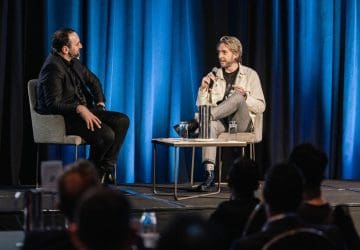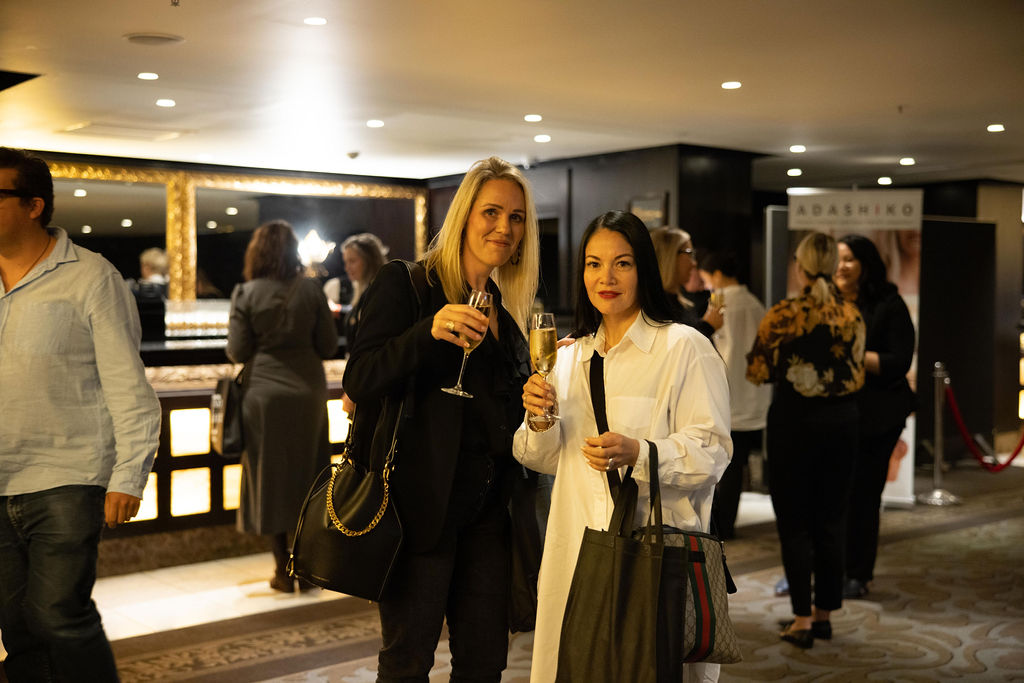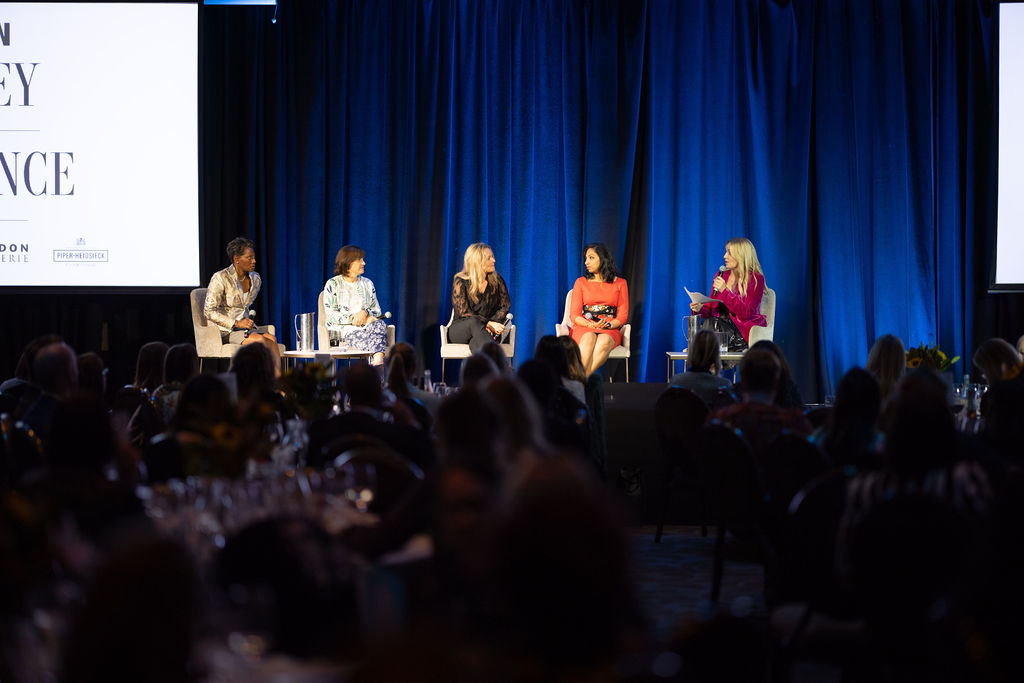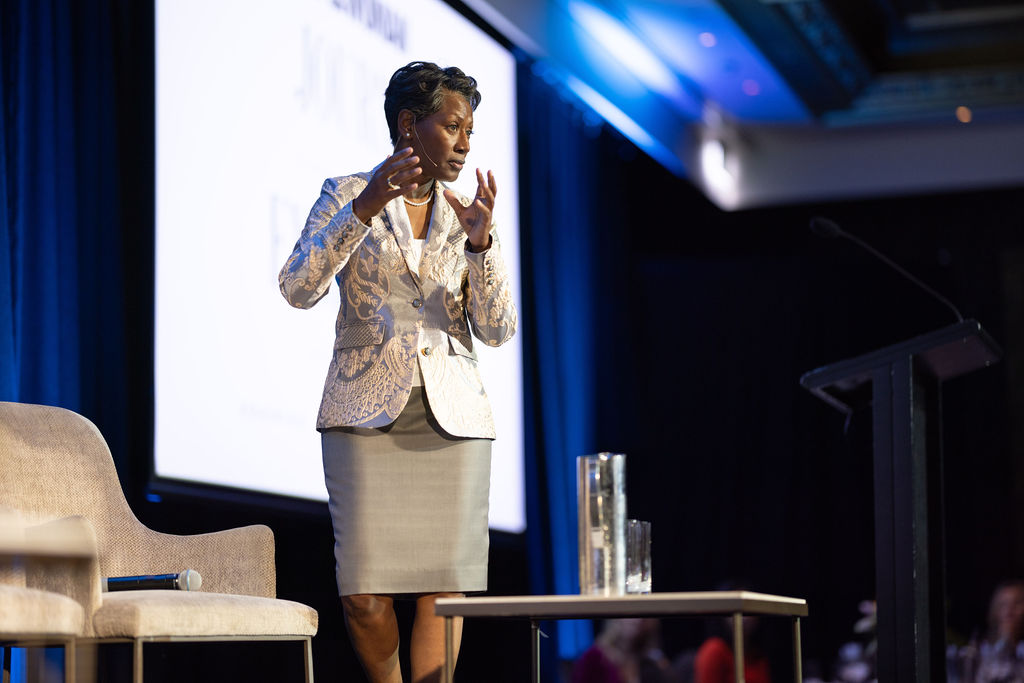The future of how humans interact with technology
This is a really, really important topic for us human beings, because we are entering an era just now where machines are going to become a bigger and bigger part of our lives. Artificial intelligence, robots, all these things that science fiction has imagined, are going to start becoming part of our day-to-day lives.
Talk by Greg Cross, Co-founder and CBO of Soul Machines, speaking at M2 Success Summit, 21 July 2019.
One of the key aspects of this machine era that we’re going into is the robotic economy. It gets called a whole bunch of different things. But one of the really key things about this era is, how are we as human beings going to relate to these machines? How are we going to interact with these machines? How are we going to learn to trust these machines?
These are really, really huge issues as artificial intelligence machine systems, autonomous vehicles, all sorts of types of technology, becomes part of a machine that we interact with literally on a day-to-day basis.
At Soul Machines, what we are driven by, what we think about continuously is, what if we made it easier for us to interact with these machines? What if we made these machines more like us? What if they could learn, not just from the data that we collect that we interact with these machines on, but the experience we have when we are interacting with these machines? What we are doing is creating a human operating system for artificial intelligence. We want to make it easy for us as humans to cooperate with machines.
If you think about everything that exists in the world today, it’s based on humans cooperating together in teams and communities and societies and companies. But in this next decade, in the generations that follow this next decade, much of our future will be determined by the way in which we cooperate and collaborate with machines. Not the way in which they rule over us and steal all of our jobs and kill us all. We have a very different view of the way in which this will happen.
We have what we call a “synthetic digital human”. She’s not even based on real life likeness of a particular person. She’s not even created from a real person. She is completely synthetically made. Her name is Fatima. She works for ABC Bank, one of the biggest banks in the Middle East. She is the face of their digital banking system.
Another synthetic digital human is Yumi. Yumi is a digital brand influencer for the Procter & Gamble brand, SK-II. Yumi is going to be launched in Tokyo next month. She’ll be speaking Japanese then. She’ll be rolled out six months later in China, speaking Mandarin, and another six months later in the U.S. speaking with some form of American accent.
Yumi is a digital twin. She is an exact replica of Japanese-Brazilian model that SK-II selected to be the face of their brand. It’s hugely exciting, multimillion dollar, multi-year project that is underway.
For a bit of background on Soul Machines, I co-founded it with Dr. Mark Sagar just over three years ago. Mark is well known for winning two Oscars for his animation work in the movie industry. That’s really what inspired his work in terms of what we do today; the incredible facial animation he brought to the big blue creatures in the Avatar movie, the incredible human emotion that he got to be expressed on King Kong. Those are the movies he won his Oscars for. And that became the foundation of his quest: to build a different type of animation system, and animation system to this AI era.
We’re 120 people now and we’re one of the top AI research companies in the world. We compare ourselves with the Google DeepMinds of this world, because we’re fundamentally looking at how we get from where we’re at today with artificial intelligence, to that future world of artificial general intelligence. Or as Ray Kurzweil from Singularity University called it, that moment of singularity.
And so one of the key concepts here is, how do we add more human intelligence to the version of artificial intelligence that we have today. This is where what we are doing; the IP, the patents we are filing, the researchers. We have neuroscientists, psychologists, cognitive linguistics specialists on our team. This is the work that we’re doing.
Our research team is based here [in New Zealand] largely, although we have just set up our first engineering team in Silicon Valley. My business executive team is all based in the U.S., headquartered in San Francisco. I have VPs for my sales, business development, customer success, and product, all U.S.-based because with the work that we are doing, we have to compete and win in the U.S. market.
Interestingly, my sales person from the Australian-New Zealand market is based in Melbourne. That says something about the way in which we think about competing on the world stage. We’re working with some of the biggest brands in the world already across multiple industries and we have many, many different use cases.
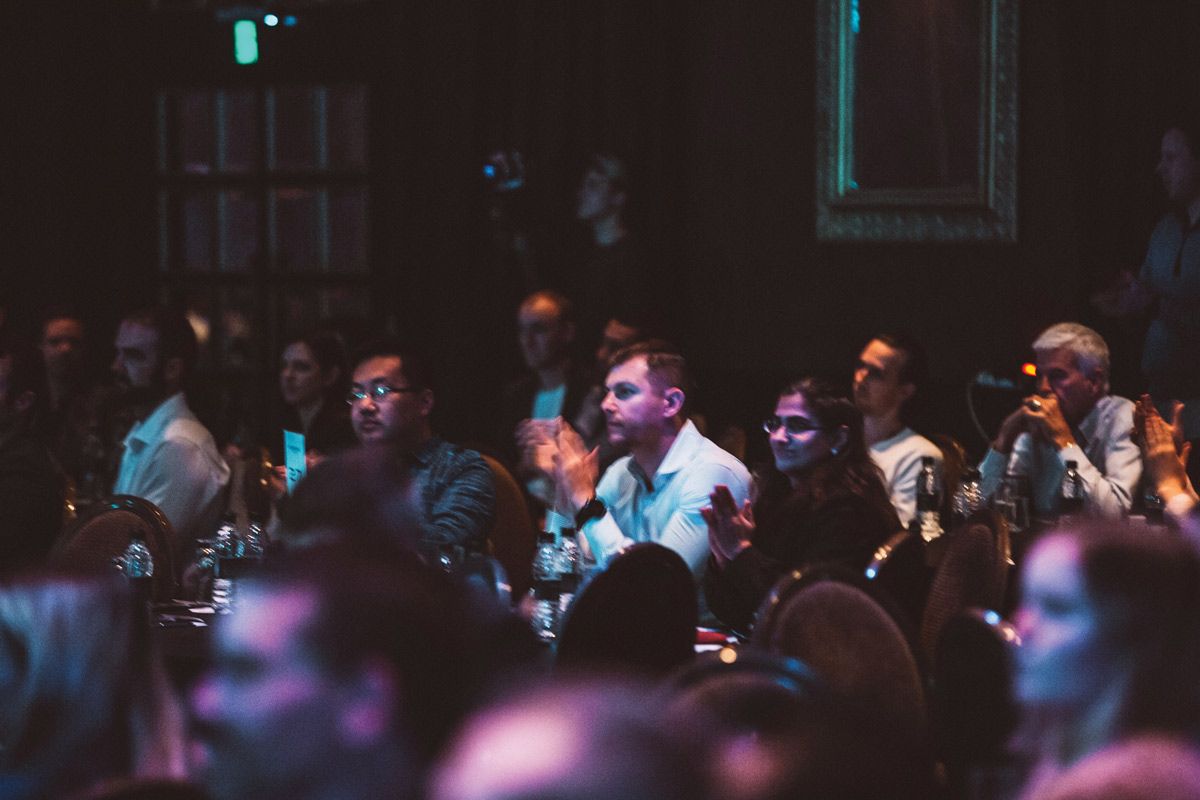
One of the ways to think about what we’re doing here is, why would a company want to start deploying a digital workforce? What can Yumi provide that we can’t get today? One of the big problems that large organisations, governments, big corporations, and big brands have today is this concept of personal experience. How do we personally experience big brands and big organisations today?
Hal Varian is the Chief Economist at Google. He came up with something that has become known as Varian’s Law; “You can predict the future based on what rich people have today.”
I’ll give you an example, let’s take the banking industry. If you’re a wealthy, successful businessperson, you’d get a private banker. That private banker gives you personal attention, provides you with specialised knowledge in a way that only rich people get today. Imagine a future where banks can provide a private digital banker to every single customer that they have and that provides personal experience, specialised financial and banking advice to you in the same way that rich people get today.
That’s one of the ways we think about this future, this concept of democratising the delivery of personal service and specialised knowledge. I can challenge you to give me any industry and I can give you an example of how this is going to make a difference.
We don’t train enough teachers in our societies today. We don’t have enough doctors. If you’re rich, you’re white and you live in a big city, you’re okay. If you can’t tick two out of three of those boxes, you’ve got limited choices. That’s the reality, not just here, but in every wealthy country in the world.
Providing hospitals and schools with digital doctors and digital teachers to serve communities that just don’t have access to them today, are all parts of the way in which we think about the democratisation of this information.

Our world is already getting blurred. Who knows who Kylie Jenner is? The youngest billionaire on the planet, she is a social media influencer. Well, now we have Lil Miquela, a digital social media influencer. She doesn’t exist in real life. She was created by an advertising agency. She has two million followers on Instagram, last time I checked. That’s the only personality that she has. And she’s now paid by big brands, like Prada, to appear in print advertising campaigns for them.
How many of you watch Westworld? A television series which imagines the future where we pay to go on vacation to have adventure experiences with humanoid robots. And the real irony of Westworld is the characters are being played by real people today. The digital world and this world of the future is getting meshed up as we think about it and as we experience it.
Let’s talk a little bit about what we are doing as a company. The first thing you have to get your head around is as humans, we’re quite special. We’re intelligent, although some people would say we’re doing a pretty good job of f**king up our world, so maybe we’re not. We’re self-aware as people, which is quite a unique human trait.
And we’re autonomously animated. We don’t think about that. But the way I’m interacting with you, the loudness of my voice, the way I’m using my hands; that’s autonomous animation. I’m being autonomously animated by my brain. Everything I’m thinking, doing, responding to is being processed and being delivered by my brain. When we think about autonomous animation, we think about creating a digital brain.
If we think of what is state of the art, this is kind of the technical challenge that we as a company have been working on, not just for the three years that we’ve been a company, but the five years before that where Mark ran a research lab at the University of Auckland.
If we think of the baseline of animation today, it’s the movie industry. High quality, incredible CGI characters which they spend years building. Animation which, using actors, and motion capture suits, and cameras, and production crews, costs about $100,000 a minute to animate a hero character in a big budget Hollywood movie. To get that animation just right so that we, as human beings, can relate to those CGI characters.
We’re working on creating a digital brain. This is world-leading work. Mark and his team of neuroscientists, cognitive scientists, cognitive linguistics, researchers, and developmental psychologists have been working on this technology for eight years now. Just now, some of our competitors, the Google DeepMinds of this world, some of the top professors in AI, and places like MIT are coming out and saying, “Maybe deep learning is not going to be the end of the road for artificial intelligence. It’s not going to get us to the AGI [artificial general intelligence]. Maybe we’re going to need to start studying some new sciences and some new subjects.” This makes us really, really happy because we’ve been doing it for a long time.
We wanted to think about how we create a roadmap for our technology. The autonomous vehicle industry has been around for about 10 years now. They created a taxonomy so people could understand. They could see a road map from where we are today, where we drive our own cars, to a level far in the future where a car drives us, and we don’t even have a steering wheel.
We wanted to create a similar taxonomy for the way in which we think our industry is going to develop. Right at the moment, we’re operating as a company at level three. As you could see from Yumi, we are synthesising human behavior today. We are wanting to move all the way up to creating a level of self-awareness, a level of contextualisation.
Contextualisation is incredibly important in the way in which we communicate as human beings. When we’re communicating face to face, we use multi-channel communications, not just the sound of my voice, but the way I’m expressing myself in a whole variety of ways. When you have multi-channel communication, we understand the context. We build relationships. We build trust in a very, very different way. We’ve actually modeled aspects.
We can go all the way back to neuroscience research reports. Our brain in simple terms has three control systems. Our reptilian brain, or our brain stem, which controls our breathing and our heart rate; our digital humans have to have that. It affects our emotions, the way we express it.
Our limbic system, our emotional response system, if I stand up here and smile, some of you have to smile back because that’s the natural instinct of how we respond to a smile. Some of you chose not to, and then you used your cortex or your rational brain to override to say, “Well that’s a pretty dopey smile. I’m not going to smile back.” This is how we think about our world.
Our digital humans now have arms and legs. We’re building out their motor control functionalities, so they’ll be able to touch and interact with the screen in front of you.
We are building out a tool set which enables our clients to build their own digital humans. Eventually, it will enable you to build a digital version of yourself. We see three eras in terms of the roll out of this digital human world; the digital workforce, which is the era we’re in today, the digital entertainment industry, so movies, games, sports, they all embrace this era of AI and AR and VR. There will be the whole era of digital entertainment.
Digital DNA studio is a tool that enables our clients to make their own digital faces. That puts us in the digital talent agency business. There are four digital humans we created for one of our clients to choose which one they wanted. Not one of those people were real. Not one of them is based on the likeness of a real person. They’re all synthetic digital humans produced by Digital DNA studio.
We’re doing a lot of really, really interesting work with CEOs of major corporates, major brands who want to be first. We know this world we’re living in. We know every industry on the planet today. The economics are going to fundamentally shift and change in this industrial revolution era that we’re entering at the moment.
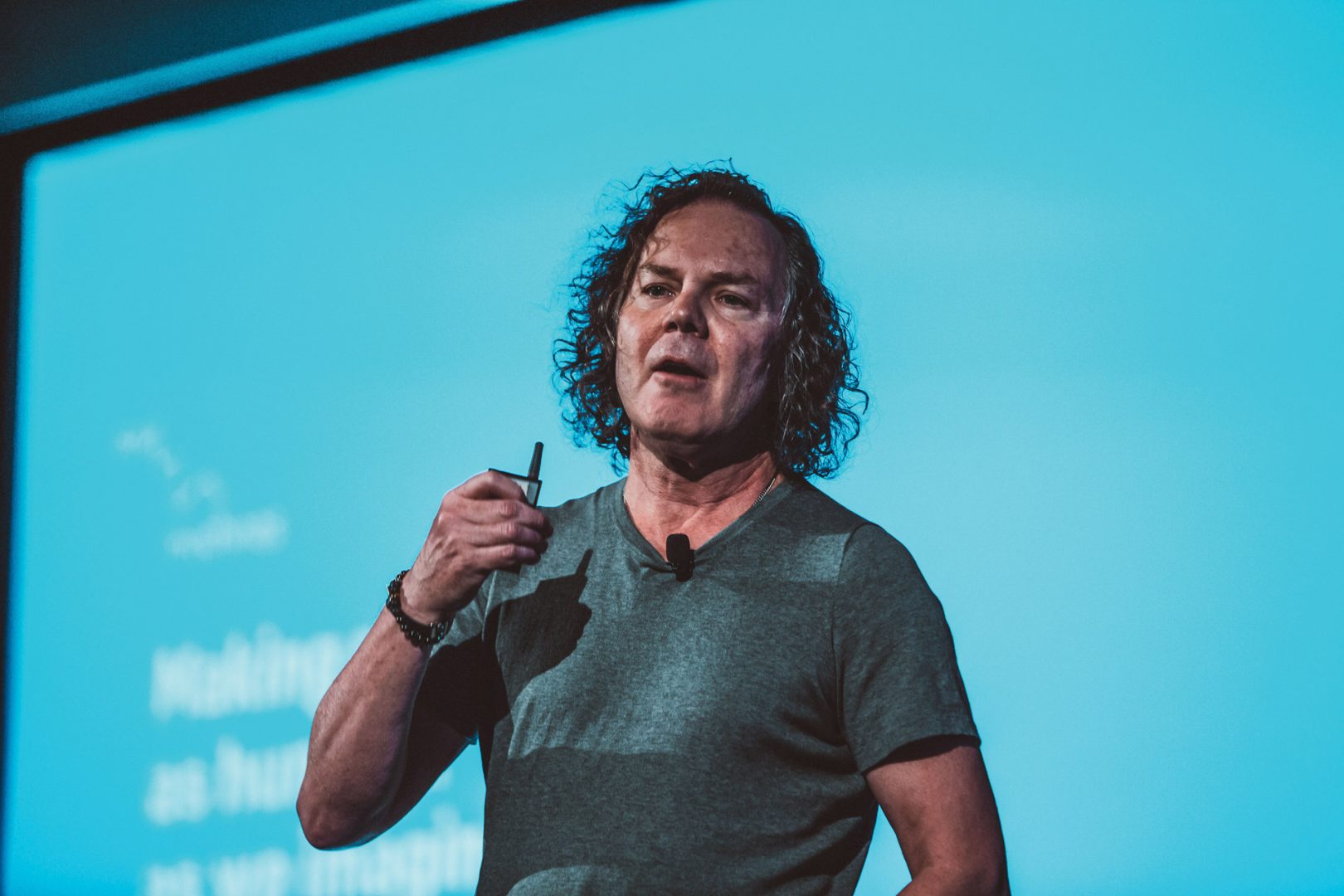
The banking industry is going to change completely. The automotive industry is going to change completely. The way we deliver health care and education is going to change completely. The technology industry that I’m part of is going to change completely over the next 10 years. It’s going to be an incredibly disruptive time.
One of the things that I challenge every audience I speak to is to think about how long can you afford to not experiment, and innovate, and start to understand what artificial intelligence might do for your business. AI is an exponential technology. The more you use it, the better it gets.
The question you all face is how much of a lead do you want to give your competitors? Because if they are first, the simple reality is you may never ever catch them. I can put my hand on my heart. I don’t have a crystal ball that’s much better than yours. But dozens, hundreds, thousands of big corporations that exist today will probably not be there in 10 years time.
We can create these one-to-one connections between brands and fans. Think of a musician, a Hollywood actor or actress, a sports star; their ability to connect using a digital version of themselves one-on-one with their fans. Think of Ronaldo, a Portuguese football player. What kids in the world would not love to have a one-to-one conversation with Ronaldo and ask him about how he trains, how he scores goals? He’s a person that spends a huge amount of his time working with underprivileged kids because he was an underprivileged kid. He can extend the reach of his brand and his philanthropy by having a digital version of himself.
Imagine a future where we could bring somebody who has been dead back to life. Imagine being able to have a conversation with Vincent van Gogh. Imagine kids being able to learn physics from a digital Albert Einstein. Think of the inspiration and our ability to tell stories and exchange data in a very, very different way than we will. We’re on this era of digital immortalisation.
In your lifetime, you’ll have the ability to create a digital version of yourself and your great, great, great, great, great, great, great grandkids, in a couple of centuries time, could have conversations with you about what primitive life was like back at the beginning of the fourth industrial revolution.
This is a reality today. The third era of the digital human is a digital us, where we can create digital versions of ourselves if we want to. These are some of the parts of the exciting future that we imagine as a company.
You can see as we grow, the way we define our business is as a giant communications network. If you think about today, we communicate mainly using our smartphone. But how are we going to communicate with machines? We see by adding human intelligence to artificial intelligence and machines, enabling them to communicate in the same way that we like to communicate with each other.
We going to have this giant communication network between humans and machines? And it will grow very, very quickly to a huge population of these digital humans and having literally billions of conversations per month.
The sophistication of the applications is going to continue to grow as they get more knowledge and more content over time. Today, we’ve got about 30 of these digital humans deployed and a whole range of different applications. Customer service, sales, creating a common customer experience right across an organisation, HR recruitment and training.
One of our clients has to interview hundreds of thousands of potential employees every month. They have to onboard hundreds of thousands of new employees every year. Digital training, digital education using AI is a great platform for this.
All of these conversations that we have with chatbots and digital humans today, the state of the art of the underlying engine, the NLP engine that converts speech into text, enables us to query data and come back with an answer; that’s all based on conversation content today. Created by humans.
We’re on the cusp of an era over the next two to three years where we’re going to see the next iteration, what they call natural language generation engines where you can feed data into this system and it produces conversational content automatically. We are at that point where the amount of content, the amount of knowledge that will continue to grow exponentially over the next 20 years.
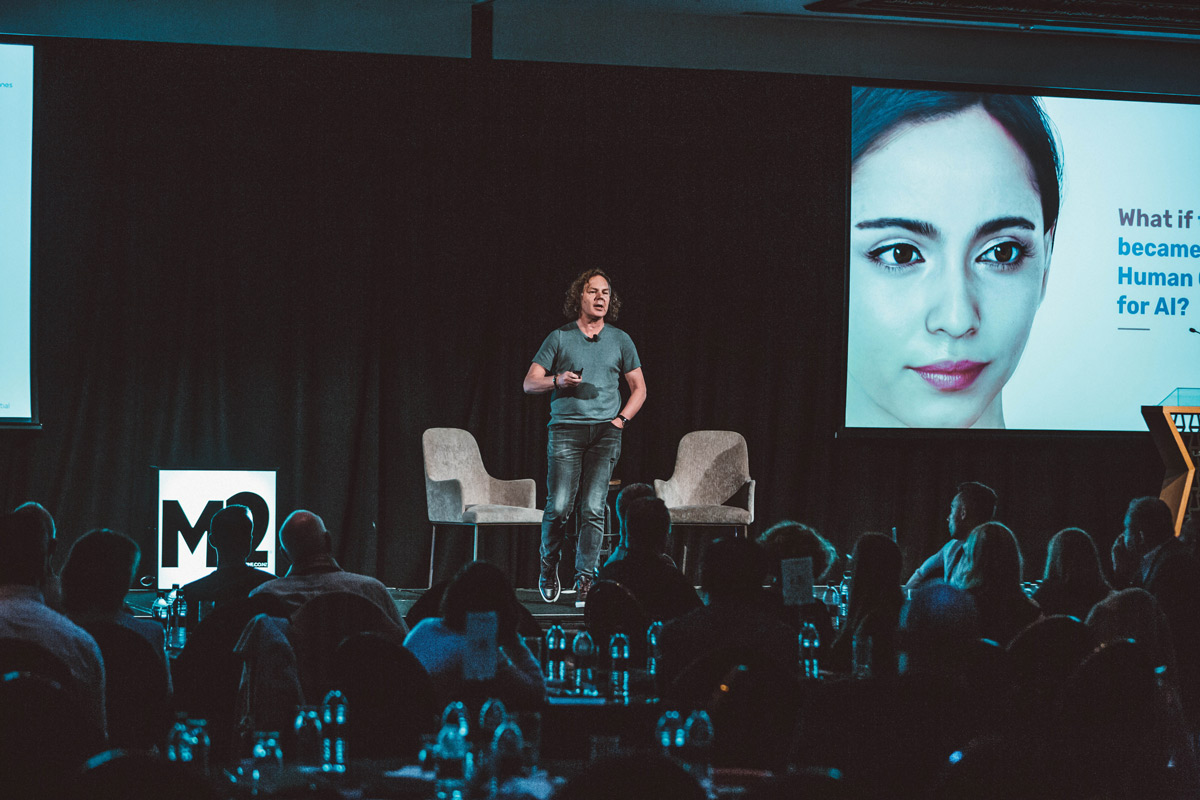
When you’re designing a synthetic digital human, it’s quite contrary to the way we think about that today because when we go to hire a real person today, we’re not allowed to design our employees. We’re not allowed to discriminate on any basis today.
All of a sudden, we’re asking our clients, “What do you want to be the values of your digital humans? What do you want to be the personality? What color eyes would you like them to have?” It’s a very, very different type of design experiment. But that’s just the way they look. You’ve then actually got to design their personality.
Another one of our digital humans is Sam. Sam is our first digital employee. We now eat our own dog food, Sam’s one of our digital workers. If you go to our website, you can register there to get access to Sam. It might take a little while because we’re really just deploying.
By the end of this quarter, Sam will live on our website. Anybody in the world can go talk to her at any point in time. We’re experimenting with a whole bunch of different personalities for Sam.
Q&A
Dominic Bowden: How can everyone here today start utilising this technology? What are the questions they should be asking themselves about how to implement this into their business?
This is brand new emerging technology. Not all of us want to be first. What you do need to think about though is how the fundamental economics of your business is going to change over the next 10 years? What creates value in your business today? And how’s that going to change with this type of technology over 10 years?
If you think of the banking industry, they’ve got open banking regulations which means they have to give you your financial data if you want it. They don’t own the data anymore. They have strict privacy laws. They are steering down the barrel of block chain and cryptocurrencies, which mean you and I don’t need to have a bank in the middle of a transaction that we have.
So what are they going to have left? The customer experience. That’s all they’re going to have left. How are they going to compete for customers? How are they going to be able to maximise customer experience in the future?
That’s some of the starting points that everybody has to start thinking about.
A lot of people say that New Zealand is not a great place to raise capital, why is that?
I’ve been doing this for a really, really, really long time. I have a pretty simple philosophy when I’m building a business and creating a business today. You have to think about how you’re going to compete on a global stage. You have to look at where you can access the smartest money in the world. For us, who are the smartest investors in artificial intelligence?
Our single biggest investor is Horizons Ventures, out of Hong Kong. They are the leading early stage investor in artificial intelligence in the world. They funded the Demis [Hassabis] and Mustafa [Suleyman] from DeepMind when they spun out of Cambridge University. They funded the team from Siri before it got acquired by Apple. They fund the best.
I have a very, very simple way of looking at it. If I can’t attract the best investors in my category in the world, do I really have a business that is going to make a difference on the world stage?
That’s kind of the way I look at it.
The lesson is really you need to ask yourselves the questions: do we have something that’s really fundamentally global? And then go hunting for that money.
Yeah, go find it. Go ask for it. Go knock on doors. Kick down doors. Make it happen.
Find out more about our next event here


